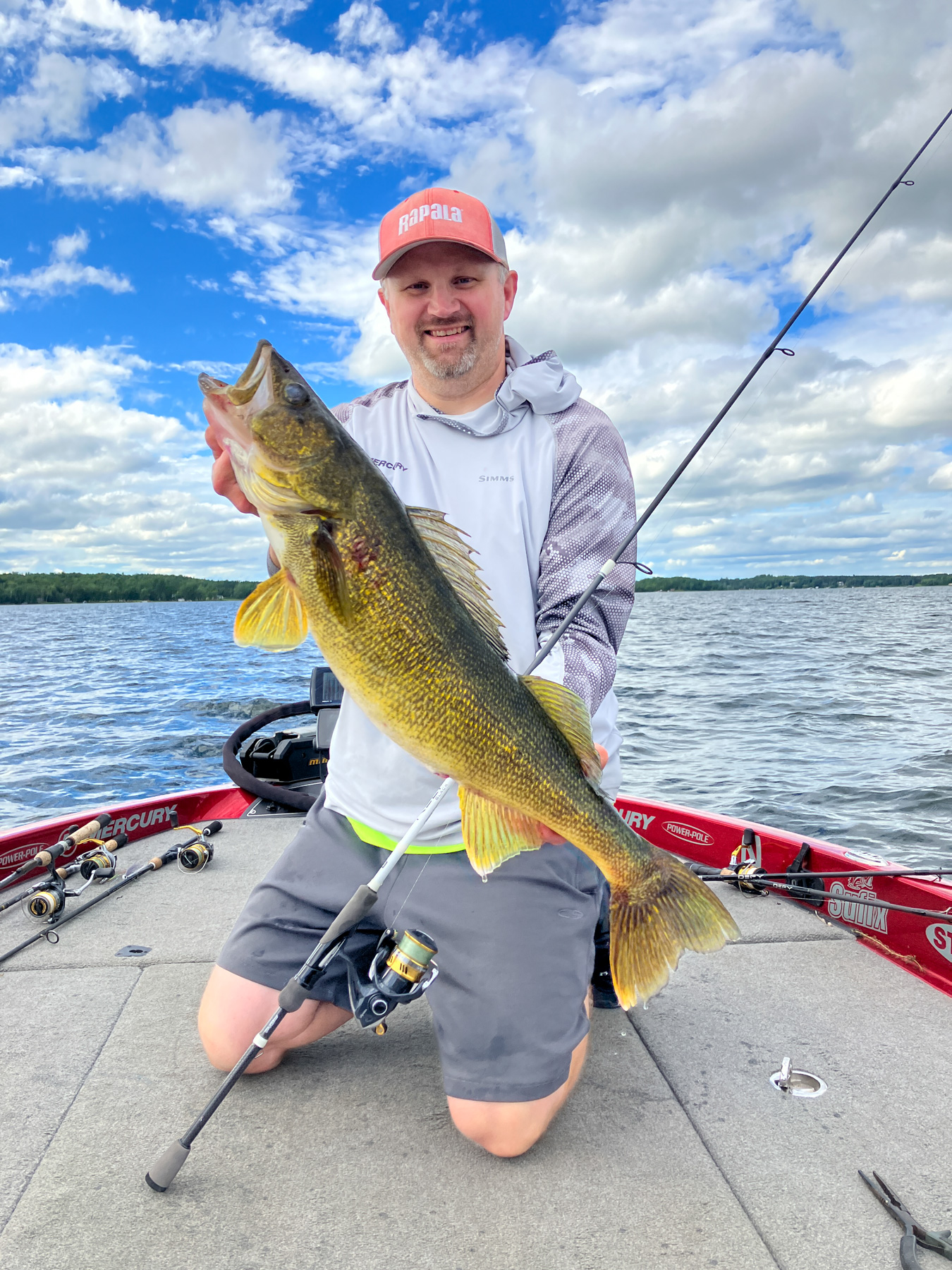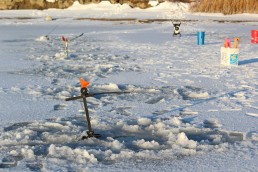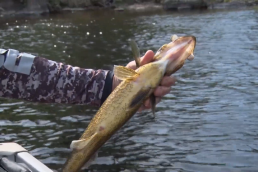Non-Traditional Walleye Tactics That Work
SHARE THIS POST
Back in the day, anglers needed only master a few techniques to be successful catching walleyes throughout the open-water season. It all started in spring, usually at the Opener, with the proverbial jig and minnow. Anglers would bring along their jig box, buy a few dozen of their favorite minnows and be all set. This tried-and-true technique catches walleyes in lakes, rivers and reservoirs every year.
Once the water started to warm, anglers would switch over to leeches and ‘crawlers until the water cooled back down in fall. Once the water cooled enough, the jig and minnow would shine again. This plan worked back then and remains effective to this day.
Tournaments and technology have pushed anglers to learn more about walleyes and has helped drive different ways to catch them. Pulling crankbaits, slip-bobbers and rigging with large minnows have helped many tournament anglers fill their bags and cash checks.
With the advent of forward facing sonar, anglers are learning so much about their favorite species that it is all pretty new and exciting. Things once assumed are now able to be observed while out on the water. Anglers watch walleyes pursue baitfish, scatter when boats go by overhead, and of course suspend out away from structure. This technology is opening eyes and spurring the curiosity of anglers trying to find more ways to catch them. We know that trolling works, but if the boat spooks the fish, are there better ways to fish for them?
Glide baits have been popular for a few years now. Jigging Rapalas were the most common glide bait when the trend started to gain traction, and now there are now numerous manufacturers and variations to the technique. Due to the huge demand for glide baits, Rapala recently launched the Jigging Shadow Rap to offer a variation to the original. This bait features modern finishes and a slower, darting action, giving anglers another option to entice a few more bites from a school.

Are you enjoying this post?
You can be among the first to get the latest info on where to go, what to use and how to use it!
This type of bait can catch fish whether they are actively feeding or not. The heavy lure easily finds bottom, and with a snap of the lure, it darts off the bottom and quickly heads right back down. Nearby fish see the lure and need to react quickly to get it. This forces fish to make a decision and oftentimes produces reaction strikes.
There have always been a few different-sized options when using this technique. If you are using 8-pound-test, then most Jigging Raps will fish just fine. Vary how much and how often you jerk the lure off bottom. It will take a little practice. but the technique flat-out catches walleyes and other species.
Slip-bobbers have been used for walleye for a long time. On some lakes, it is the preferred method to present a bait up on structure without having to risk snags. It becomes a waiting game; you patiently wait until a fish decides to take the offering. Most slip-bobber setups were geared toward shallow-water scenarios. However, when walleyes are in deeper water, anglers often forget about using slip-bobbers. Being able to keep a minnow or leech right in the strike zone is a recipe for success, no matter what time of the year.
Targeting fish in 20 to 30 feet of water using slip-bobbers is becoming a popular technique. Walleyes occupy key structure such as humps and points. Whether you are using traditional or forward facing sonar, if you can cast a slip-bobber rig away from the boat and get it to hang out in key locations, you will catch more walleyes.
Swimbaits are another form of non-traditional walleye lures that catch fish. Their wide variety runs from tiny soft-plastics to large, almost muskie-sized offerings. They are not one-sized fits-alls and seem to be lake-specific for providing a bite or two. Soft-plastic paddle tails are most popular, from 2 up to 5-plus inches in length. Try baits like Storm Largo Shads in 3- up to 4-inch sizes, particularly in natural color patterns such as live yellow perch.
Most of the success from these baits is due to reaction strikes. In some lakes, steady retrieves produce fish, but most come after ripping them off bottom or snapping them out of cover and/or weeds. Use an appropriately sized jighead to match the presentation.
Everyone loves learning how to catch more fish. Next time things slow down with a jig and minnow, brush up on these skills to become a more well-rounded walleye angler.
MWO
SHARE THIS POST
Did you enjoy this post?
You can be among the first to get the latest info on where to go, what to use and how to use it!
Steve Mattson
Steve Mattson has been writing articles for MidWest Outdoors since 2001. He is a driven angler, guide and sponsored tournament pro who has won both bass and panfish tournaments, and has placed in walleye and pike events. He resides in northern Minnesota and enjoys helping others catch more fish. For more info: mattsonangling.com and @mattsonangling.



